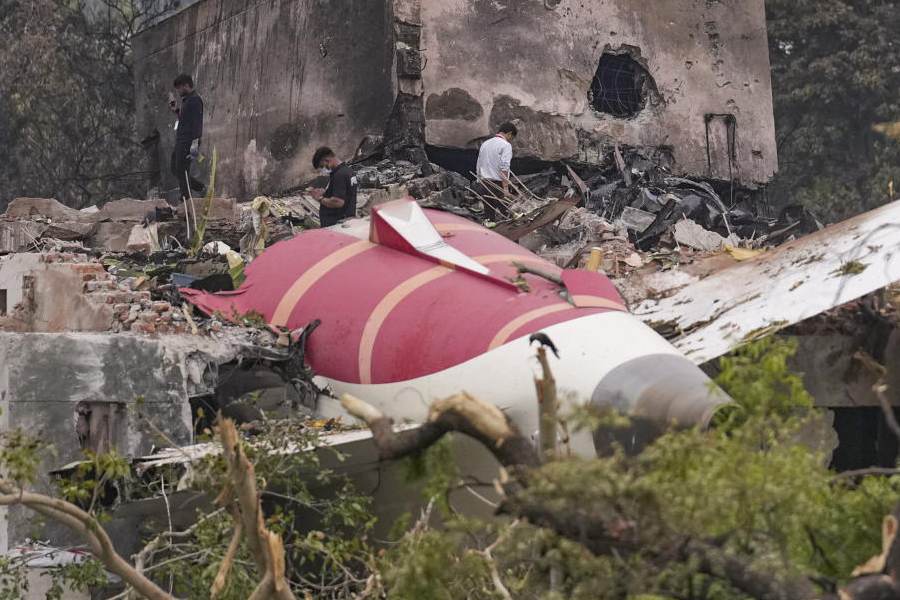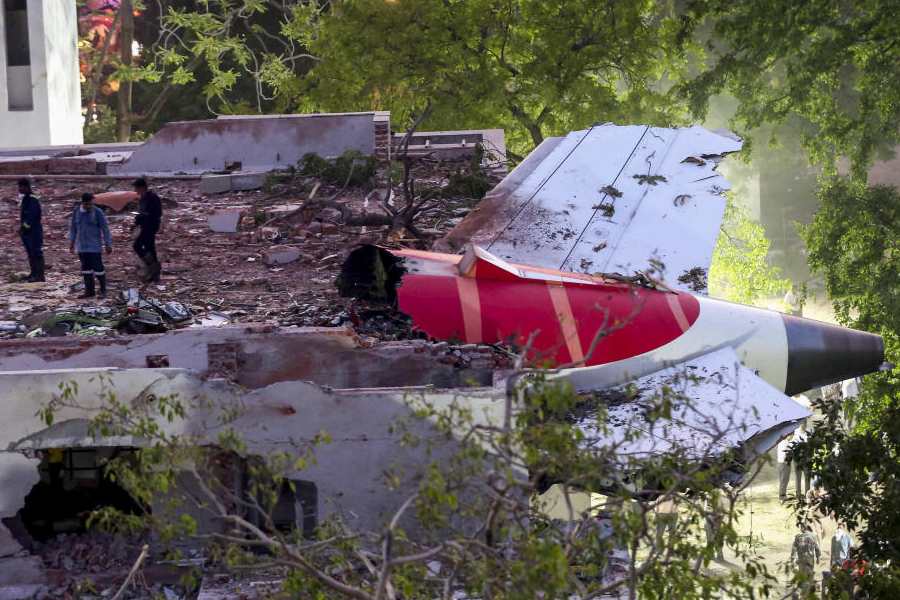 |
Coal mining activity and thermal power plants have threatened the cultural landscapes of Hazaribagh and North Karanpura Valley in a major way if a recent report of the International Council on Monuments and Sites (ICOMOS) is anything to go by.
The council is a body of professionals throughout the world working for the conservation and protection of cultural heritage spots.
It is also the only global non-government organisation of this kind, which is dedicated to promoting ?application of theory, methodology, and scientific techniques? to conserve architectural and archeological heritage. ICOMOS carried out an extensive research on the traditional vernacular architecture of the North Karanpura Valley of Hazaribagh.
Some times the ?traditional vernacular architecture? of a place are the simple structures that we take for granted ? in case of Karanpura they are the mud huts. There are around 200 such huts or houses in each village. The usual single-storied hut comprises a loft for storage of grain and a square quadrangle surrounded by rooms with an inner courtyard called aangan, where all domestic duties, such as drying of grain, is done by women of the house.
According to a report by ICOMOS, these houses have sloping, tiled roofs and the tiles are hand-made, often made in the village itself by the local potter. While there are specific ?groups? that make such tiles, there are other tribes, such as the Kurmi (farmer) and Oraon (Dravidian tribe), who also make large, flat tiles by hand that are fired.
These decadent huts follow age-old traditions of home-making that vary from tribe to tribe. ?This is the artistic genius of the artisan and builders. This is now getting threatened and it is unprotected. It is a historic heritage that is not recorded in any monument list,? says the report, quoting the research work of Michael Petzet in ICOMOS World Report 2001-2002.
The villages of the North Karanpura Valley are villages of artisan craftsmen such as potters, oil extractors, iron smiths, metal casters, weavers, basket makers, carpenters, and other semi-Hinduised tribes, and their buildings reflect their amazing creative talent, says the report.
But ICOMOS apprehends that once mining activity destroys these villages, this heritage will disappear forever, along with the great Khovar marriage art and Sohrai harvest art of the women artists.
?Once this landscape is destroyed and replaced by open-cast coal mines and industry, this architecture will disappear,? the report says.
The Hazaribagh district covers the entire North Chhotanagpur Division, or the entire plateau of Hazaribagh.
The survey finds that the entire heritage of the lower Damodar, cultural, social, ecological, archeological, and built heritage was destroyed by the Damodar Valley project which began in 1947 with big dams, coal mines, coal washeries, thermal power stations, and industries.
But if the report is to be believed, then the villages have little factors that point to a similarity with the Indus Valley Civilisation.
Generally, in the village-areas belonging to the tribal artisan communities, such as Prajapati (potter), Kurmi (farmer), Rana (carpenter), Teli (oil-extractor) and others, houses have been built along well laid-out roads that, along with the houses, reflect an ancient tradition that have been compared to the Indus Valley housing in the ICOMOS survey.
Another intriguing feature is the presence of a well-planned drainage system.
According to the report, the courtyards in the tribal artisan villages have ?excellent underground drainage? in stone channels and these drains run from the central courtyard, under the rooms, to the vegetable garden at the rear of the house.
?They thus collect rain water from the roofs sloping towards the courtyard and carry the water to the vegetable plot, in the middle of which a well is built,? the survey says.
The ICOMOS points out that the tribal artisan villages clearly follow an informed tradition of cultural landscape in the great ancient agricultural tradition common to farming communities in other parts of the world.
?In the tribal Oraon, Munda and Santhal hamlets we noticed a little change both in the vernacular housing and cultural landscape, since these great forest tribes generally situate their sloping tile-roof mud houses in a corner of the agricultural estate, so that the forest is never far away.
?By virtue of this, there is no village in the traditional sense,? says the report.
Besides, it also observed that the valley has a high water table and streams descending from the plateaux on either side carry loads of fertile silt and the loamy soil.
?Unfortunately, at a depth of only a few dozen feet from the surface lies a solid carboniferous deposit of sunken fossilised trees that is the source of the coal which the developers are eyeing as an economic prize,? the report concludes.
Salman Ravi











